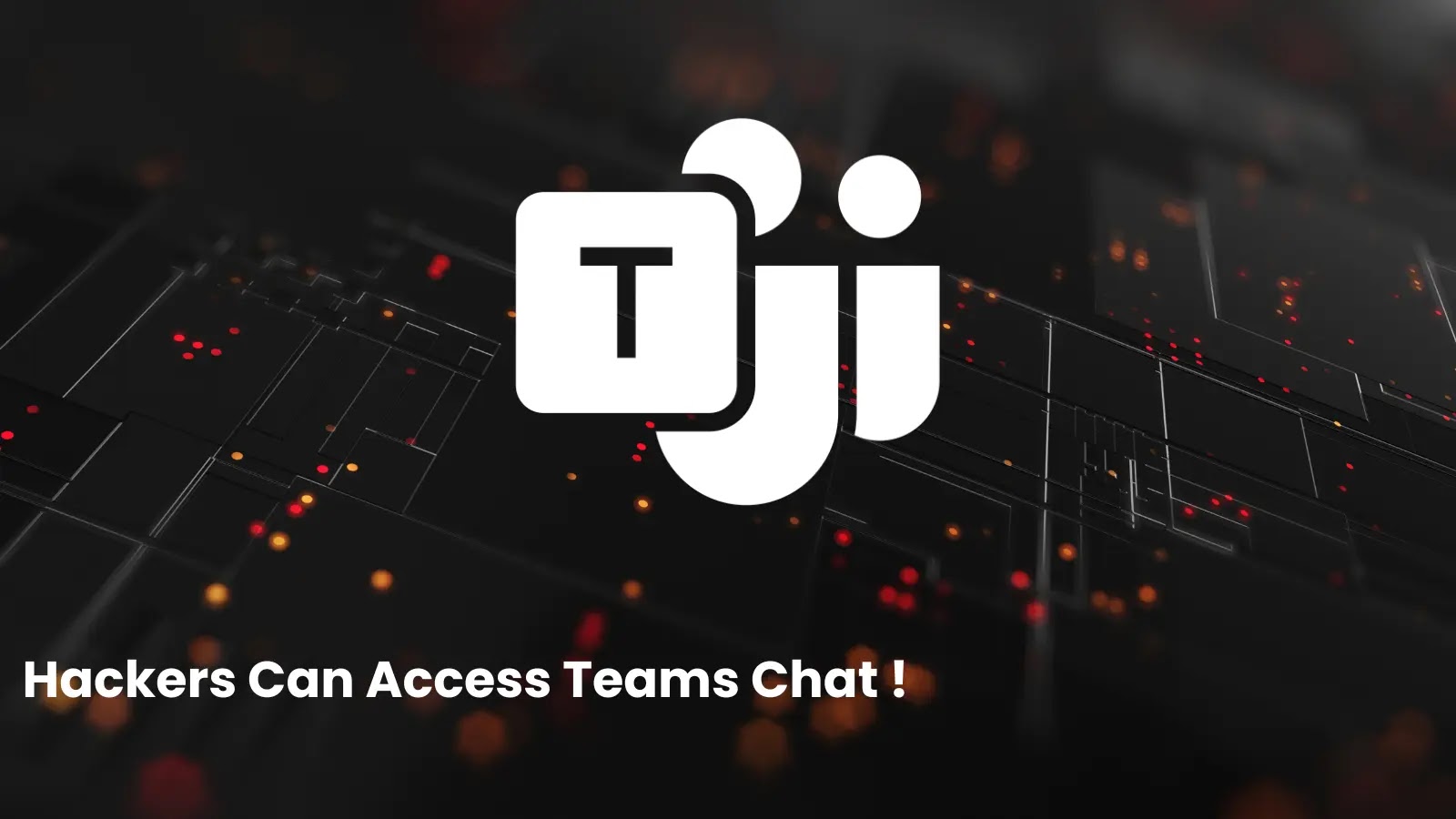
Hackers Can Access Microsoft Teams Chat and Emails by Retrieving Access Tokens
The digital landscape is a constant battleground, and for organizations relying on critical communication platforms like Microsoft Teams, the stakes are exceptionally high. A recently uncovered technique reveals a concerning vulnerability that allows attackers to pilfer authentication tokens, granting them unauthorized access to sensitive data within Microsoft Teams, including chats, emails, and even SharePoint files. This isn’t just a theoretical threat; it’s a potent new avenue for data exfiltration and credential compromise that demands immediate attention.
The Microsoft Teams Access Token Vulnerability Explained
At the heart of this critical security flaw lies the way Microsoft Teams on Windows clients handles authentication tokens. As detailed by security researcher Brahim El Fikhi in his October 23, 2025 blog post, attackers can leverage a specific method to extract encrypted authentication tokens from the Teams application. These tokens, essential for maintaining a user’s logged-in session, are often stored in a Chromium-like Cookies database. The insidious part? These aren’t just obscure data fragments; they are the keys to a user’s digital kingdom within Microsoft 365.
The extraction process itself hinges on the Windows Data Protection API (DPAPI). DPAPI is a built-in feature designed to protect sensitive data by encrypting it using user-specific credentials or system keys. While intended as a security mechanism, in this context, it becomes the tool by which attackers can decrypt the stolen tokens. Once decrypted, these tokens can be replayed by an attacker, effectively impersonating the legitimate user and gaining unfettered access to their Teams communications, Outlook mailboxes, and even sensitive documents stored within SharePoint.
Impact of Compromised Access Tokens
The implications of this vulnerability are far-reaching and severe:
- Unauthorized Chat Access: Attackers can read, send, and delete messages within private and group chats, potentially escalating their access or gathering sensitive intelligence.
- Email Account Takeover: With access to Outlook emails, threat actors can conduct spear-phishing campaigns, reset passwords for other services, or exfiltrate confidential communications.
- SharePoint Data Breach: Sensitive documents and files stored in SharePoint, crucial for many businesses, become vulnerable to theft and manipulation.
- Bypassing Multi-Factor Authentication (MFA): Since these tokens represent an already authenticated session, attackers can often bypass MFA challenges, making this a particularly dangerous form of credential compromise.
- Lateral Movement: Gaining access to one user’s account can serve as a stepping stone for attackers to move laterally within the network, compromising other systems and accounts.
Remediation Actions and Mitigations
Addressing this vulnerability requires a multi-pronged approach focused on preventing token theft and mitigating its impact. While a specific CVE for this technique isn’t widely published yet, the underlying principles of credential theft and session hijacking are well-understood. Organizations should implement robust security practices to safeguard against this and similar threats.
- Regular Software Updates: Ensure all Microsoft Teams clients and Windows operating systems are kept up-to-date with the latest security patches. Microsoft frequently releases updates that address vulnerabilities, even if not directly related to this specific token extraction method, they can close existing attack vectors.
- Endpoint Detection and Response (EDR): Deploy and configure EDR solutions to monitor for suspicious activities on endpoints, such as unauthorized access to application data directories or unusual process behavior. EDR can detect attempts to access or decrypt sensitive files.
- Least Privilege Principle: Enforce the principle of least privilege for all users and applications. Restrict user permissions to only what is absolutely necessary for their job functions.
- Network Segmentation: Segment your network to limit the blast radius of a potential compromise. If one endpoint is compromised, network segmentation can prevent attackers from easily moving to other systems.
- User Education and Awareness: Train employees to recognize and report suspicious emails, links, or activities that could lead to malware infection or credential theft. Phishing is a primary vector for delivering the tools needed to exploit such vulnerabilities.
- Conditional Access Policies: Implement stringent Conditional Access policies in Azure AD to restrict access to Microsoft 365 resources based on factors like device compliance, location, IP address, and application. This can help detect and block anomalous login attempts even with stolen tokens.
- Session Revocation: In the event of a suspected compromise, immediately revoke user sessions for Microsoft Teams and other Microsoft 365 services. This invalidates any stolen tokens and forces users to re-authenticate.
- Strong Anti-Malware Solutions: Deploy and maintain robust anti-malware and antivirus solutions on all endpoints to detect and prevent the execution of malicious software designed to steal tokens.
Detection and Prevention Tools
Leveraging the right security tools is paramount for detecting and preventing exploitation of such vulnerabilities.
| Tool Name | Purpose | Link |
|---|---|---|
| Microsoft Defender for Endpoint | Endpoint Detection and Response (EDR) for threat detection and response. | Microsoft Defender for Endpoint |
| Azure Active Directory Conditional Access | Policy-based access control for enforcing security requirements for M365 access. | Azure Conditional Access |
| Sysinternals Process Monitor | Real-time file system, Registry, and process/thread activity monitoring for suspicious access. | Process Monitor |
| Wireshark | Network protocol analyzer for detecting suspicious network traffic or unauthorized connections. | Wireshark |
| Security Information and Event Management (SIEM) | Aggregates and analyzes security logs from various sources for threat detection. | (Vendor-specific, e.g., Splunk, Microsoft Sentinel) |
Conclusion
The ability for attackers to extract and leverage authentication tokens from Microsoft Teams on Windows represents a significant threat to organizational security. This method bypasses traditional password protections and, in many cases, multi-factor authentication, making it particularly dangerous. Proactive measures, including vigilant patch management, advanced endpoint protection, stringent access controls, and ongoing security awareness training, are essential to defend against this evolving threat. Organizations must understand the mechanics of this attack to fortify their defenses and protect their critical communication and data assets.





